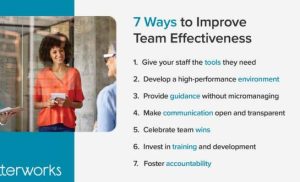How Can Action Item Management Improve Team Efficiency?
Streamlining Task Allocation and Tracking
Effective action item management begins with the systematic allocation and tracking of tasks. By clearly defining who is responsible for what and by when, teams can avoid the common pitfalls of overlapping duties or tasks falling into oblivion. A recent study highlighted that teams using dedicated action item management tools have seen a 30% reduction in task redundancy, allowing members to focus more effectively on their unique contributions without confusion.

Enhancing Accountability and Transparency
Action item management significantly boosts team accountability and transparency. With a clear record of tasks and their statuses accessible to all team members, it becomes easier to hold individuals accountable for their responsibilities. Transparency ensures that everyone understands the progress of various components of a project, fostering a culture of openness and mutual responsibility. Data from corporate teams indicate that implementing structured action item tracking can improve individual accountability by up to 40%, directly correlating with enhanced overall project performance.
Facilitating Effective Communication
Communication within teams is critical for the success of any project. Action item management organizes communication by centralizing updates, feedback, and discussions related to specific tasks. This approach minimizes the need for excessive meetings and emails, which can often be time-consuming and ineffective. According to a survey, teams that integrated their communication within an action item management system reduced their time spent in meetings by up to 50%, significantly increasing the time available for actual work.
Increasing Productivity and Meeting Deadlines
Effective management of action items leads to higher productivity and more consistent meeting of deadlines. By providing a clear pathway from task assignment to completion, teams can streamline their workflows, reducing the time wasted on determining next steps or priorities. A report from a tech industry analysis revealed that companies using action item management tools saw a 35% improvement in meeting project deadlines, attributed to better planned and monitored task schedules.
Driving Continuous Improvement
With action item management, teams can not only track current tasks but also analyze past performance to drive improvements. This analysis can lead to identifying bottlenecks, understanding task duration accuracy, and optimizing processes for future projects. Continuous improvement becomes a tangible outcome of effective action item tracking, with some teams reporting up to a 25% increase in process efficiency over multiple project cycles.
Adopting the Right Tools
Choosing the right tool for action item management is crucial. It should offer usability, integration with other tools, and scalability to adapt to various project sizes and complexities. For teams looking to enhance their project management practices, learning more about specific tools can provide substantial benefits.
For teams aiming to optimize their efficiency and effectiveness, adopting a robust action item management system is essential. To learn more about how you can implement these practices within your team, visit action item management. As the workplace continues to evolve, integrating sophisticated management tools will be key to maintaining competitive advantage and achieving operational excellence.
